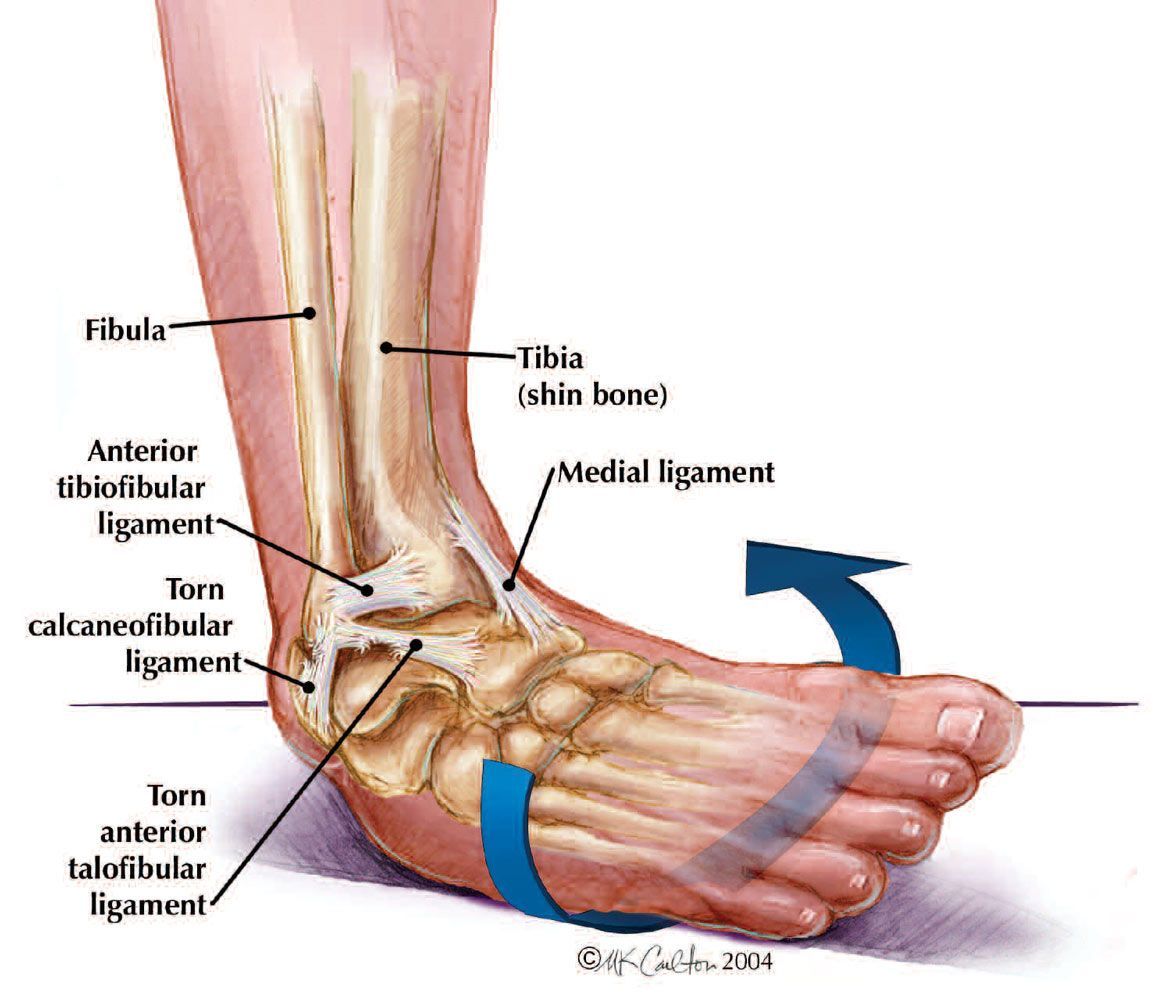Understanding ankle sprains: Part 1
What is an ankle sprain and how to fix it? Read on below

What is a sprained ankle?
Commonly known as a ‘rolled ankle’, an ankle sprain is an acute injury that occurs when your foot twists beyond its normal range of movement. This is often very painful and causes pain, bruising and swelling around the ankle joint.
Most ankle sprains cause damage to the ligaments in your ankle, which are the structures that connect the bones together and provide stability. The ligaments can either get stretched, like a rubber band or torn.
Types of ankle sprains
Depending on what position your foot was in when you injured yourself, or what way the ankle twisted, will determine which ligaments have been damaged. There a 3 main types of ankle injuries:
1. Lateral Ankle Sprains
These are the most common, when your foot twist inwards (inversion) damaging the ligaments on the outside of your ankle. There are 3 ligaments on the outside of the ankle: Anterior Talofibular Ligament (ATFL), Calcaneofibular Ligament (CFL) and the Posterior Talofibular Ligament (PTFL).
2. Medial Ankle Sprains
These are less common than lateral ankle sprains and occur when your foot twists excessively outwards (eversion), causing pain to the inside of your ankle. The deltoid ligament is the primary ligament on the inside of your ankle that can get damaged.
3. High Ankle Sprain (Syndesmosis)
These are also infrequent but usually more severe. This injury affects the ligaments that sit at the top of your ankle, connecting the tibia and fibula bones together.
Symptoms of a syndesmosis injury are pain and swelling across the front of the ankle joint and the outer part of the ankle.
It is important to see a physiotherapist for a full assessment to determine what type of ankle injury you have and the severity of it.
Signs and Symptoms of Ankle Sprains
The most common signs and symptoms are:
1. Pain – Pain around the ankle bones that is often intense and occurs immediately after the injury
2. Swelling and bruising – These can happen immediately after the injury or over the next 24 hours.
3. Pain with walking, or being unable to walk or put weight through your foot. If this is the case, then you may need an x-ray of your foot and ankle to rule out a fracture.
4. Feelings of instability or giving way – it is common if the ligaments have been damaged to feel like your foot and ankle may roll again. If this is the case then you need to get physiotherapy to address this.
Physiotherapy Treatment for Ankle Sprains
The physiotherapy journey for ankle sprains begins immediately after your injury:
1.
Protection: In the early stages we want to protect the injury, by following the ‘PEACE & LOVE’ guidelines – for more information, see our blog on this
here.
2.
Immobilisation: Depending on the severity of your injury, you may need a CAM boot, ankle brace or strapping, or all of these to help in your recovery.
3.
Dry needling: This can help to reduce pain, swelling, inflammation and muscle spasm after your injury
4.
Exercises:
This is a crucial part of ankle sprain management. Your physiotherapist will give you exercises to help your walking return to normal, as well as exercises to restore your range of movement, strength, balance and stability to get you back to your pre-injury function.
All ankle injuries need physiotherapy to help restore the full function of the foot and ankle. Have you hurt your ankle? Book in
here
to get an assessment from our experienced sports physiotherapist.
- Bachmann, L. M., Kolb, E., Koller, M. T., Steurer, J., & ter Riet, G. (2003). Accuracy of Ottawa ankle rules to exclude fractures of the ankle and mid-foot: systematic review. British Medical Journal, 326(7386), 417.
- Bleakley, C. M., O'Connor, S. R., Tully, M. A., Rocke, L. G., Macauley, D. C., & McDonough, S. M. (2012). Effect of accelerated rehabilitation on function after ankle sprain: randomised controlled trial. BMJ, 344, e3042.
- Delahunt, E., Bleakley, C. M., Bossard, D. S., Caulfield, B. M., Docherty, C. L., Fourchet, F., ... & Gribble, P. A. (2018). Clinical assessment of acute lateral ankle sprain injuries (ROAST): 2019 consensus statement and recommendations of the International Ankle Consortium. British journal of sports medicine, 52(20), 1304-1310.
- Doherty, C., Bleakley, C., Delahunt, E., & Holden, S. (2020). Treatment and prevention of acute and recurrent ankle sprain: an overview of systematic reviews with meta-analysis. British Journal of Sports Medicine, 54(11), 621-626.
- Fong, D. T., Hong, Y., Chan, L. K., Yung, P. S., & Chan, K. M. (2007). A systematic review on ankle injury and ankle sprain in sports. Sports Medicine, 37(1), 73-94.
- Kerkhoffs, G. M., Kennedy, J. G., Calder, J. D. F., & Karlsson, J. (2021). Ankle syndesmosis injuries: diagnosis and treatment. Journal of Orthopaedic & Sports Physical Therapy, 51(3), 103-116.







